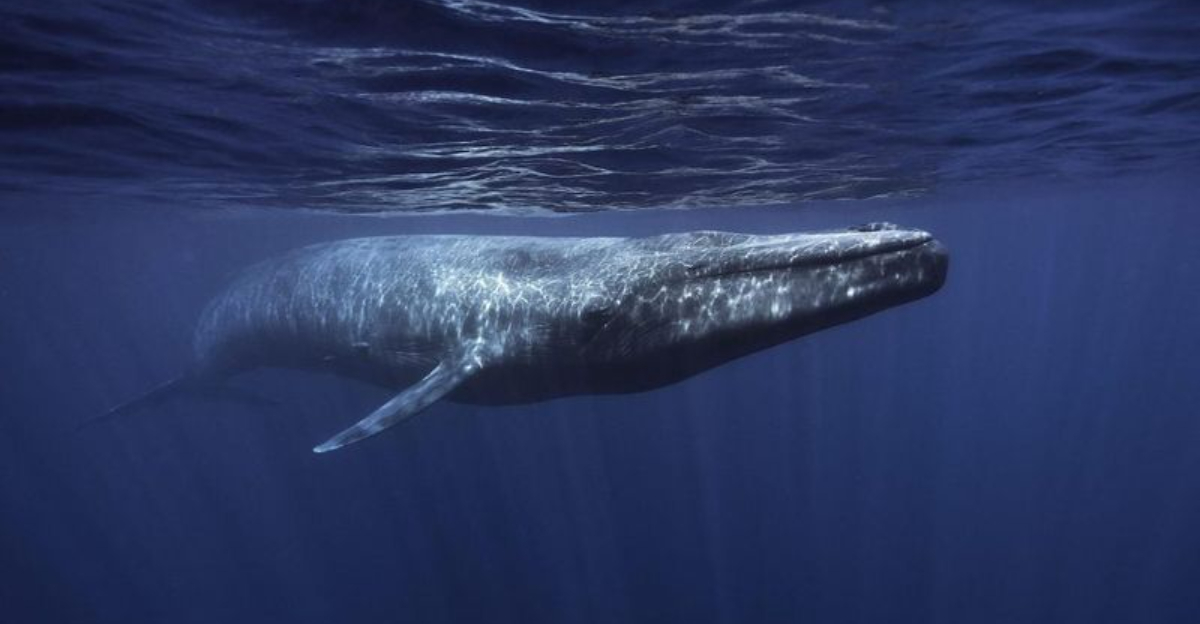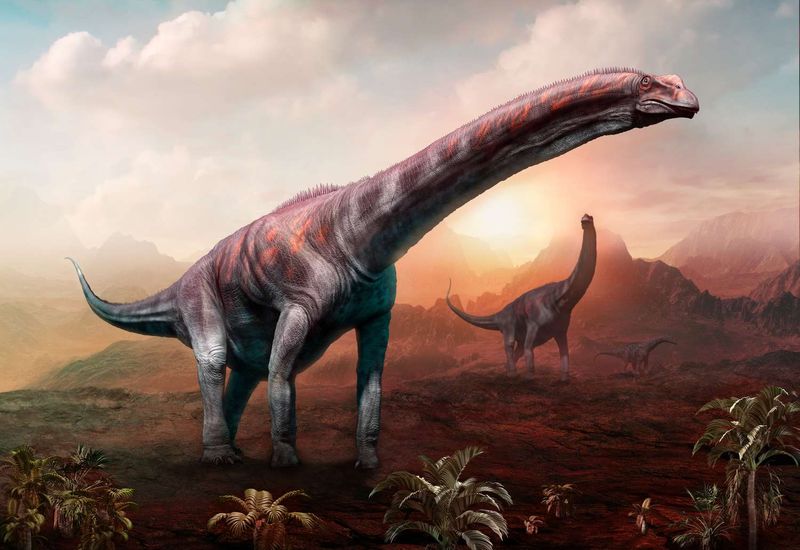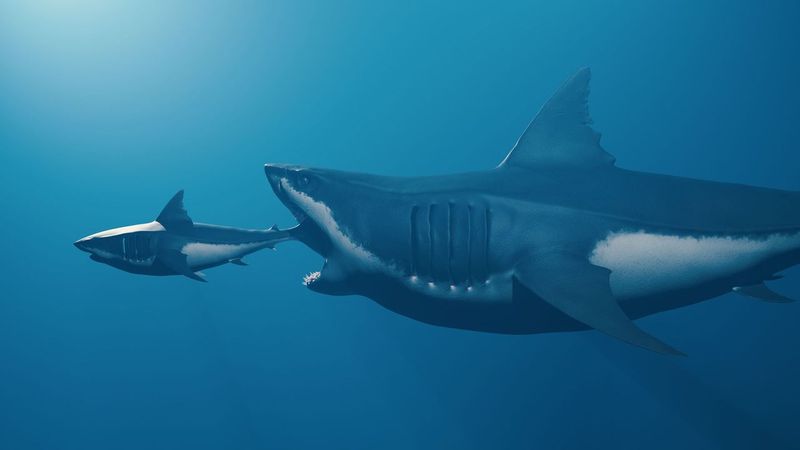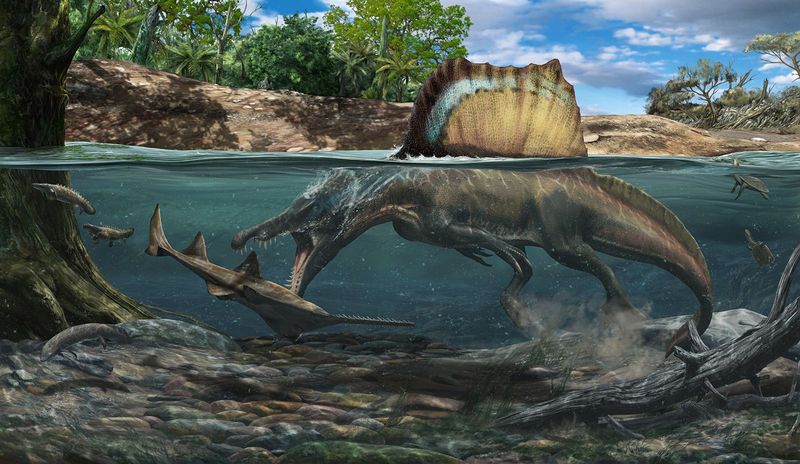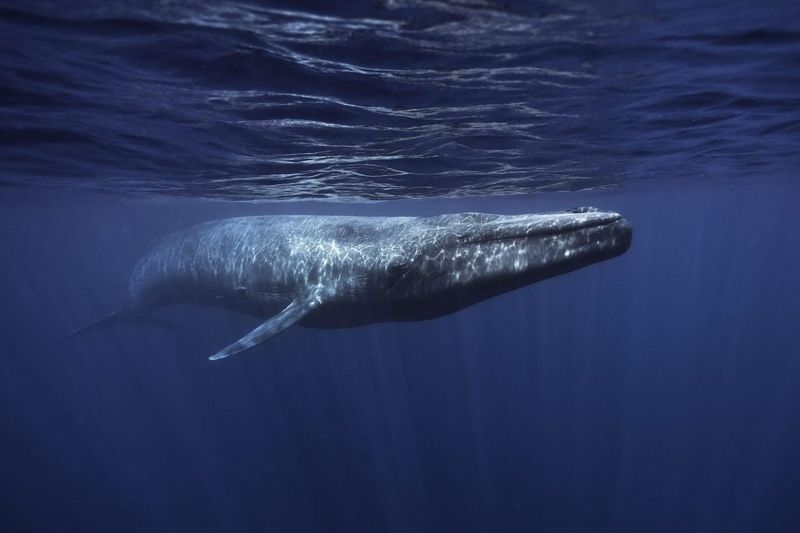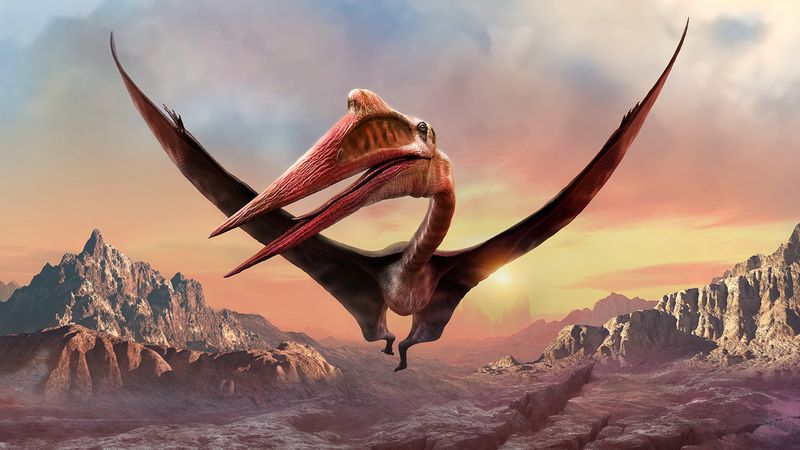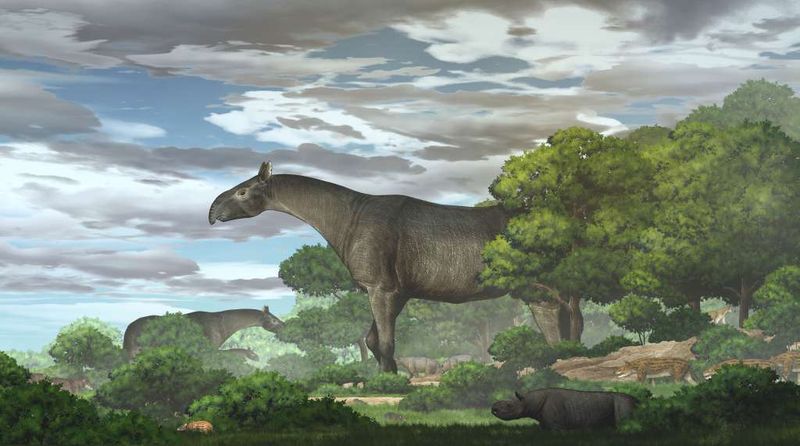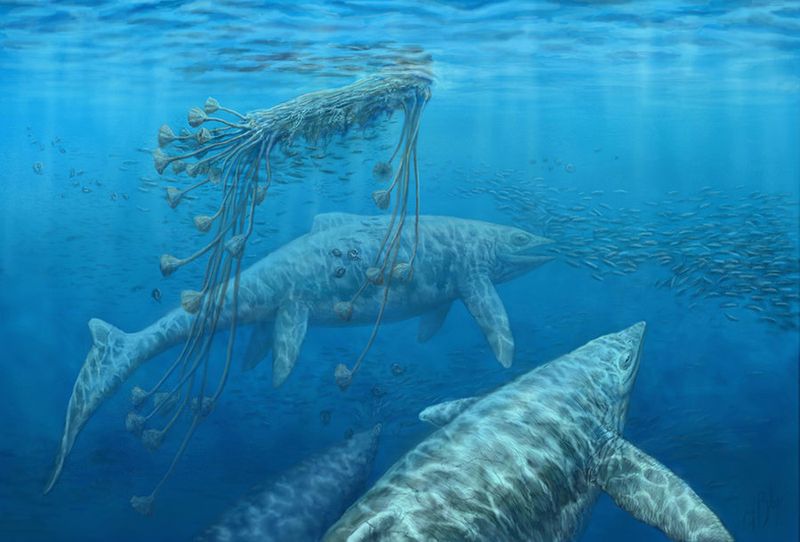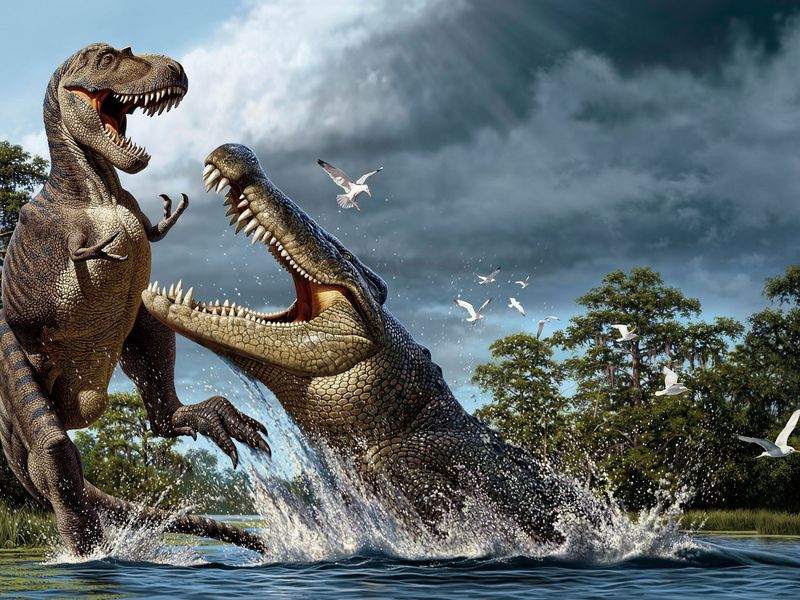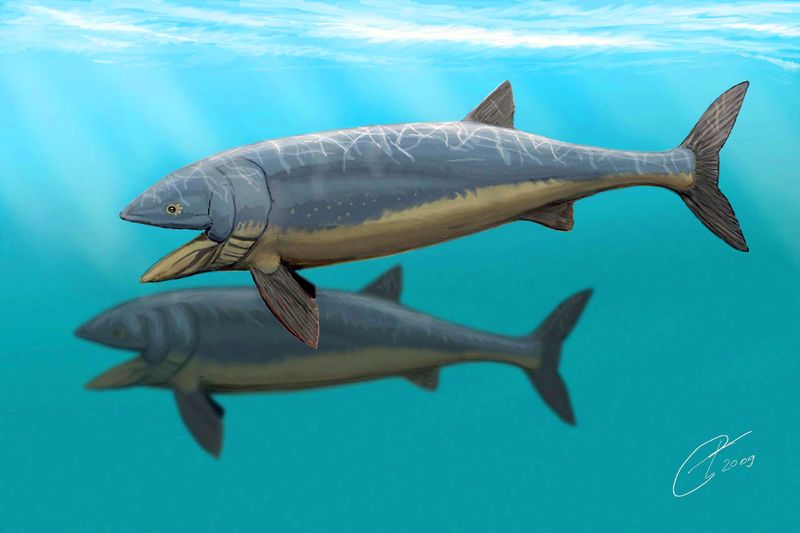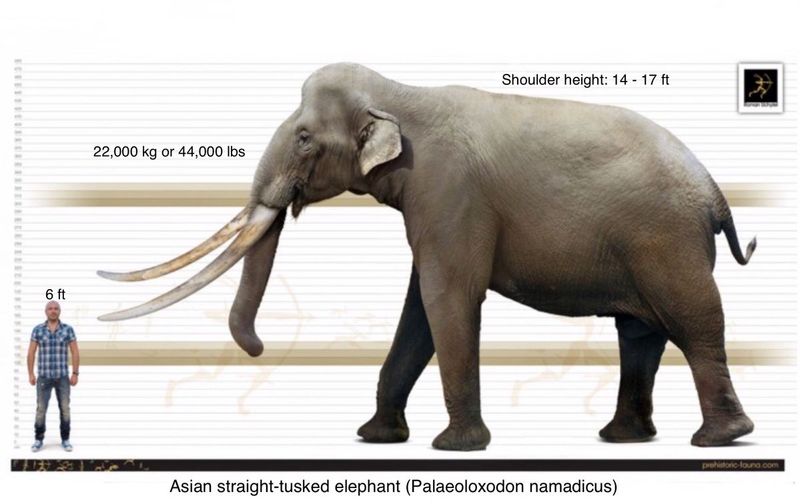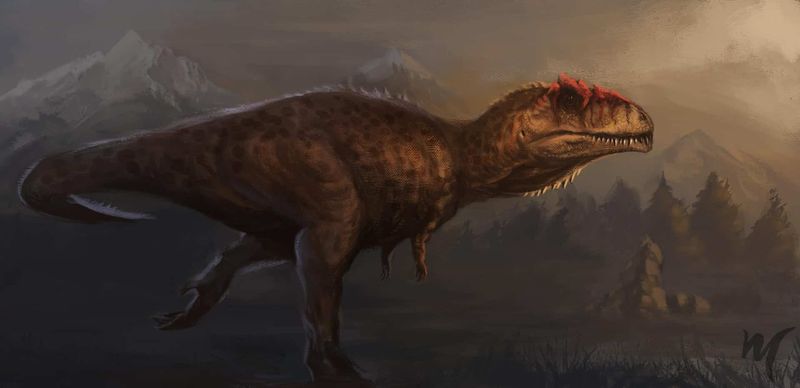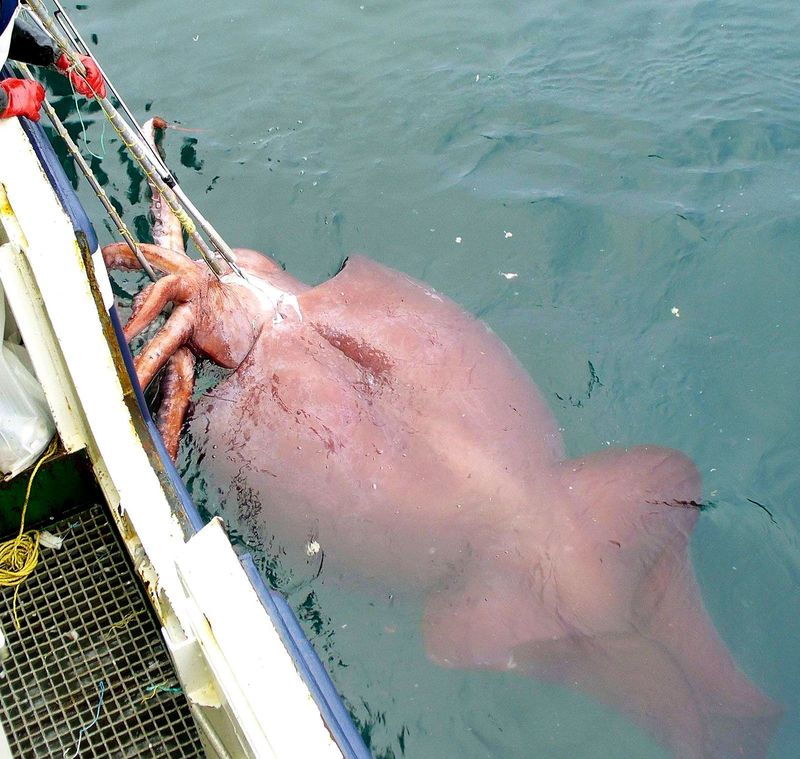From prehistoric titans to modern-day giants, these colossal animals prove that nature doesn’t do anything small. Whether they ruled the skies, the seas, or the land, these creatures made everything else look tiny by comparison. And yes—some of them are still out there, alive and massive as ever.
1. Argentinosaurus
The Argentinosaurus, estimated to stretch over 100 feet, weighed as much as 100 tons. This gentle herbivore roamed the Earth during the Late Cretaceous period. Paleontologists have long studied its massive bones, often puzzled by its sheer size and structure. Its discovery revolutionized our understanding of dinosaur gigantism. Despite its intimidating size, it fed quietly on plants, shaping the landscape around it. Each bone is a testament to nature’s grandeur and the mysteries of prehistoric life.
2. Megalodon
In ancient seas, the Megalodon was the ultimate predator, growing up to 60 feet. Its teeth, some as large as a human hand, were powerful enough to crush a car. Extinct for millions of years, it still haunts our imaginations. Fossils reveal it hunted large marine mammals, dominating its ecosystem. Some conspiracy theories speculate its survival in unexplored ocean depths. However, its legacy remains in our fascination with sharks. Megalodon’s extinction paved the way for other species, but its mystique endures, reminding us of nature’s once-unrivaled ocean rulers.
3. Spinosaurus
With a sail on its back and jaws reminiscent of a crocodile, Spinosaurus was a terrifying sight. Longer than a T. rex, it could reach up to 50 feet, hunting both land and water prey. Its semi-aquatic nature makes it unique among dinosaurs. Fossil evidence suggests it thrived in river ecosystems. This dual existence has intrigued scientists, challenging traditional views on dinosaur habitats. Its discovery added depth to our understanding of predator evolution. Every fossil uncovered paints a vivid picture of this formidable hunter’s life and survival strategies.
4. Blue Whale
In today’s oceans, the blue whale reigns supreme, not just as the largest animal alive, but in Earth’s history. These gentle giants can grow up to 98 feet and weigh 200 tons. Their heart alone is the size of a small car. Despite their enormity, they feed primarily on tiny krill, filtering thousands of gallons of water through their baleen plates. Their deep, resonant calls echo through the oceans, a testament to their enduring presence. Blue whales continue to captivate marine biologists and nature enthusiasts alike, symbolizing majesty and fragility.
5. Quetzalcoatlus
The Quetzalcoatlus, with a wingspan of 36 feet, was one of the largest flying animals ever. It roamed the skies during the Late Cretaceous, preying on small animals. Its hollow bones and large wings allowed it to glide effortlessly, covering vast distances. Its discovery shed light on the diversity and adaptability of pterosaurs. Quetzalcoatlus continues to inspire awe, symbolizing the ancient skies’ grandeur and the limitless reach of evolution’s creativity.
6. Titanoboa
Titanoboa, the world’s largest snake, measured over 40 feet. Weighing more than a ton, it ruled the tropical rainforests after dinosaurs vanished. Its fossils, discovered in Colombia, offer a glimpse into a warmer, wetter epoch. Titanoboa preyed on large crocodiles, showcasing its might. Its discovery emphasized the diversity of ancient ecosystems and adaptation. Titanoboa remains a symbol of nature’s relentless evolution, challenging notions of size and power in serpentine predators.
7. Paraceratherium
Paraceratherium, the tallest land mammal, stood over 16 feet tall at the shoulder. Weighing nearly 20 tons, it roamed Central Asia 20 million years ago. Its massive size enabled it to reach high foliage, avoiding competition. Fossils reveal its unique adaptations to ancient environments. Paraceratherium’s existence underscores the diversity of mammalian evolution. Its towering silhouette remains a testament to nature’s capacity for creating awe-inspiring giants, challenging perceptions of mammalian dominance.
8. Shastasaurus
Sleek and dolphin-like, Shastasaurus was the largest marine reptile, stretching over 70 feet. Ruling the Triassic oceans, it thrived long before whales. Its streamlined body enabled agile movements beneath the waves. Fossils suggest it fed on soft-bodied prey, unlike many predators of its time. Its existence highlights the diversity and adaptability of marine reptiles. Shastasaurus set the stage for future oceanic giants, reflecting the dynamic nature of prehistoric marine life. Its graceful form and size continue to fascinate paleontologists and marine enthusiasts alike.
9. Deinosuchus
Deinosuchus, meaning “terrible crocodile,” grew over 35 feet long. Thriving in prehistoric swamps, it was a dominant predator. Fossil evidence shows its powerful jaws could crush bones. Living alongside dinosaurs, it occupied a critical niche in ancient ecosystems. Its discovery provided insights into crocodilian evolution and diversity. Deinosuchus exemplifies nature’s predatory prowess, challenging perceptions of crocodilian limits. Its legacy endures in our fascination with ancient predators and the intricate web of prehistoric life.
10. Leedsichthys
Leedsichthys, measuring up to 50 feet, dwarfed other fish. This gentle filter-feeder swam through Jurassic seas like a submarine. Its size provided safety, while its gill rakers filtered plankton-rich waters. Fossils reveal adaptations for its unique feeding style. Leedsichthys illustrates the diverse evolutionary paths within prehistoric ecosystems. Its discovery challenged assumptions about fish size limits. Today, it remains a symbol of the vast, unexplored potential of ancient marine life, inviting continued exploration and wonder.
11. Palaeoloxodon namadicus
Palaeoloxodon namadicus, the largest elephant, may have weighed over 22 tons. Standing up to 17 feet tall, it roamed ancient Asia. Fossils suggest it thrived in diverse environments, displaying remarkable adaptability. Its impressive tusks were tools for foraging and defense. This elephant’s existence emphasizes the evolutionary experiments in size and adaptation. Palaeoloxodon namadicus serves as a reminder of nature’s extraordinary possibilities, challenging perceptions of mammalian limits and sparking curiosity about the ancient world.
12. Giganotosaurus
In the realm of giants, Giganotosaurus rivaled the mighty T. rex. This meat-eating monster measured over 40 feet long, its name meaning “giant southern lizard.” Roaming prehistoric forests, it was a formidable predator. Fossils indicate it hunted large herbivores, showcasing its strength. Its discovery in South America shifted views on dinosaur dominance. Giganotosaurus symbolizes the fierce competition among predators. Each fossil unearthed tells tales of survival and struggle, painting a vivid picture of prehistoric ecosystems’ dynamic nature and the evolution of apex predators.
13. Colossal Squid
Deep in the ocean’s abyss, the Colossal Squid remains an enigma. Growing over 45 feet, it’s larger than any known squid. Its eyes, the size of dinner plates, peer through the dark waters. Tentacles lined with hooks capture prey, showcasing its predatory prowess. Unlike many prehistoric giants, it’s still with us, albeit elusive. Rare encounters continue to intrigue scientists, highlighting the ocean’s unexplored depths. The Colossal Squid embodies the mystery of deep-sea life, challenging our understanding of marine ecosystems and sparking curiosity about the unknown.
